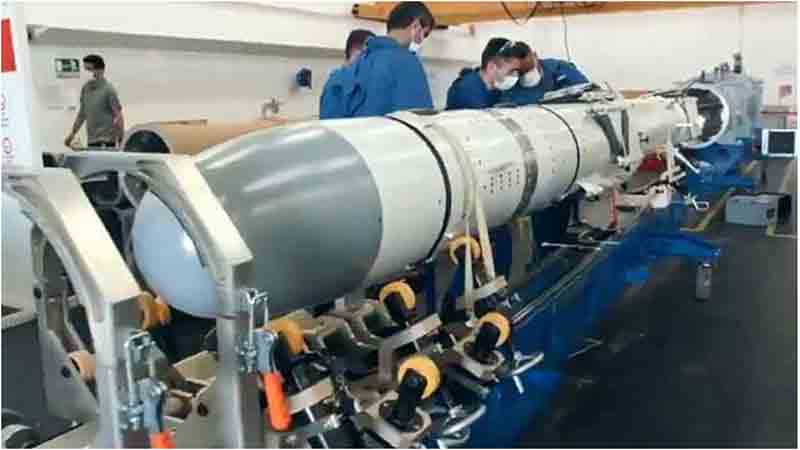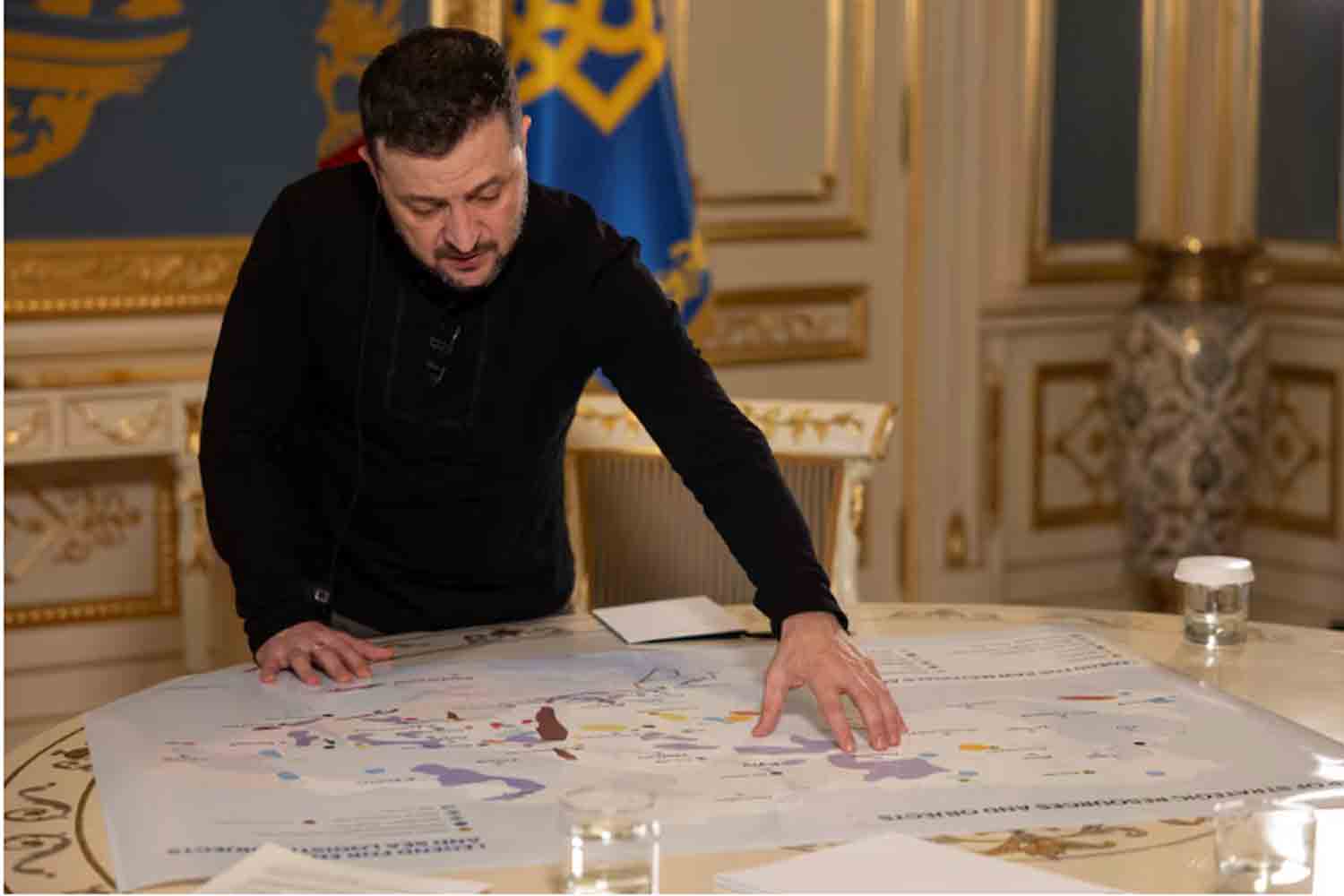In a significant step towards strengthening the partnership between Turkey and Indonesia, Turkish defense manufacturer Roketsan has entered into an agreement with an Indonesian company to create a joint production facility for anti-ship missiles, cruise missiles, and advanced munitions.
The announcement was made by Roketsan’s General Manager, Murat İkinci, during the Antalya Diplomacy Forum. This agreement not only enhances Indonesia’s defense capabilities but also involves a substantial transfer of technology, enabling the Southeast Asian country to enhance its domestic defense sector.
Finalized in early April 2025, this agreement highlights Turkey’s expanding role as a global defense supplier and Indonesia’s strategic initiative to diversify its military alliances in response to increasing tensions in the Indo-Pacific region. This development has significant implications for regional security, global arms markets, and the technological aspirations of both countries.
Over the past two decades, Turkey’s defense industry has experienced a remarkable evolution, shifting from a reliance on imports to becoming a strong exporter of sophisticated weaponry. Roketsan, established in 1988 as a state-owned enterprise, has been a key player in this transformation, developing a variety of missile systems that have gained international recognition.
Its product lineup features the Atmaca anti-ship missile, the SOM cruise missile, and the Khan ballistic missile, all of which are utilized by the Turkish Armed Forces and have been exported to allied nations. The collaboration with Indonesia builds on a history of defense cooperation, including the delivery of Khan missiles in 2022 and joint tank development with Indonesia’s PT Pindad, which produced the Kaplan MT medium tank.
During the Antalya Diplomacy Forum, İkinci reiterated Turkey’s dedication to co-developing defense technologies with partner nations, stating, “In the near future, we aim to rapidly enhance our international relationships and collaborations to significantly increase the export potential of Türkiye’s defense industry.”
The core of the agreement focuses on the collaborative development of the Atmaca anti-ship missile, engineered to effectively address naval threats with both precision and adaptability. This missile is intended to succeed Turkey’s outdated Harpoon missiles, featuring an impressive range exceeding 120 miles and equipped with a high-explosive warhead designed to penetrate robust ship structures.
With its active radar homing and inertial navigation systems, the Atmaca can fly just above the water’s surface, allowing it to avoid detection and countermeasures. Its capability to receive mid-course updates through a data link significantly boosts its accuracy against moving targets, establishing it as a powerful asset for both coastal and blue-water missions.
In comparison to the American Harpoon, the Atmaca provides a similar range and payload but integrates advanced guidance systems that compete with those of Russia’s 3M-54 Kalibr and China’s YJ-83 missiles.
For Indonesia, an archipelago with over 17,000 islands and extensive maritime territories, the Atmaca is set to enhance its navy’s capacity to safeguard vital sea routes, especially in the South China Sea, where tensions with China have intensified.
Indonesia’s choice to collaborate with Turkey signifies a strategic move to lessen dependence on conventional arms suppliers such as the United States, China, and Russia. As a prominent member of the Association of Southeast Asian Nations (ASEAN), Indonesia aims to modernize its military while skillfully navigating the intricate geopolitics of the Indo-Pacific region.
The South China Sea, a crucial route for international trade, has become a contentious area due to China’s extensive territorial claims and the militarization of artificial islands. Although Indonesia is not a direct claimant in the most disputed regions, it has experienced incursions by Chinese vessels within its exclusive economic zone near the Natuna Islands.
As a result, enhancing its naval capabilities has become a priority for Indonesia. The Atmaca missile, which will be incorporated into the country’s forthcoming Red-White frigates, could act as a deterrent against such intrusions. Additionally, the joint production model is in line with Indonesia’s 2012 Defense Industry Law, which emphasizes technology transfer and local manufacturing in defense acquisitions to promote self-reliance.
Technology transfer is a fundamental aspect of the Roketsan-Indonesia agreement, setting it apart from typical arms transactions. Unlike many Western suppliers that often limit access to essential technologies, Turkey has taken a more collaborative stance, providing training and technical support to its partner nations.
İkinci highlighted that this partnership would “promote technology transfer, strengthen Indonesia’s local defense industry framework, and implement training initiatives for Indonesian engineers and technicians.” This commitment could empower Indonesia to assemble and maintain Atmaca missiles domestically, with the potential to produce components such as guidance systems or propulsion units.
For Indonesia’s defense industry, spearheaded by firms such as PT Pindad and PT Dirgantara, this presents a chance to develop expertise in sophisticated missile technologies, thereby decreasing long-term reliance on international suppliers. The economic advantages are considerable, as domestic manufacturing could generate employment and invigorate associated sectors, including electronics and materials production.
Turkey’s readiness to share technology is part of a larger strategy to establish a foothold in the global arms market. With defense exports projected to reach $7 billion in 2024, and Roketsan contributing over $400 million, Turkey aims for a 50% increase in revenue and exports by the close of 2025.
In contrast to China and Russia, which frequently link arms sales to political agreements, or Western countries that enforce strict end-user conditions, Turkey provides cost-effective solutions with fewer restrictions.
This strategy has appealed to nations looking for alternatives to the prevailing powers. For example, Indonesia has broadened its defense acquisitions in recent years, sourcing drones from Turkey’s Turkish Aerospace Industries and showing interest in co-developing Turkey’s KAAN fifth-generation fighter jet. The Roketsan agreement builds on this progress, establishing Turkey as a dependable ally in Indonesia’s military modernization efforts.
Additionally, the agreement underscores Turkey’s goal to enhance its influence in Asia, a region historically dominated by China and Russia. By setting up a production facility in Indonesia, Roketsan secures a presence in Southeast Asia, potentially paving the way for access to other markets such as Thailand, Malaysia, or the Philippines, which are also modernizing their naval capabilities.
The Atmaca missile, known for its competitive pricing and reliable performance, may attract these countries as an alternative to China’s YJ-12 or Russia’s Kh-35 missiles. For Indonesia, this partnership bolsters its position within ASEAN, demonstrating its capacity to manufacture advanced weaponry and lessening its susceptibility to external pressures.
The agreement may also serve as a template for future partnerships, as Indonesian President Prabowo Subianto has recently expressed interest in collaborating with Turkey on submarine development.
Turkey and Indonesia have historically enjoyed amicable defense relations, stemming from their shared status as Muslim-majority nations with ambitions for regional influence. Their collaboration began to strengthen in 2010 with the joint development of the Kaplan MT tank, a project that highlighted the advantages of co-production.
The delivery of 10 Kaplan tanks in 2023 was a significant achievement, showcasing Indonesia’s capability to incorporate foreign technology into its defense framework. The Roketsan agreement builds upon this progress, utilizing Turkey’s expertise in missile systems to meet Indonesia’s maritime security requirements.
This partnership has been further solidified through high-level interactions, including a meeting in February 2025 between Subianto and Turkish President Recep Tayyip Erdogan, during which they signed agreements to co-produce drones and enhance bilateral trade.
From a technological standpoint, the Atmaca missile signifies a major advancement for Indonesia’s navy. Designed for launch from surface vessels, it can also be adapted for coastal defense systems, providing versatility in its deployment.
With a 440-pound warhead optimized for targeting frigates and destroyers, the missile features a turbojet engine that achieves subsonic speeds, balancing range with survivability. Its low-altitude flight path, coupled with sophisticated countermeasures, makes it challenging to intercept, a vital capability in contested maritime environments.
In contrast, China’s YJ-12 missile boasts a range of up to 250 miles, offering extended reach but relying on supersonic speeds that may compromise its stealth. The American Harpoon, while commonly used, is an older system with less sophisticated guidance compared to the Atmaca.
By manufacturing the Atmaca locally, Indonesia secures a modern and cost-efficient weapon that enhances its current military capabilities, which include Dutch-built Sigma-class corvettes and South Korean-designed submarines.
The geopolitical ramifications of this agreement extend beyond Turkey and Indonesia. For the United States, a significant ally to both countries, the deal raises concerns regarding its influence in Southeast Asia. Although the U.S. is Indonesia’s primary supplier of military aircraft, such as F-16 fighters, its hesitance to share advanced technologies has led Jakarta to seek other options.
The Roketsan agreement may prompt Washington to reevaluate its export policies, especially as China and Russia actively engage ASEAN nations with competitive offerings.
Australia, another influential regional player, has voiced apprehensions about Indonesia’s military expansion, particularly in light of recent tensions regarding Russian aircraft potentially operating from Indonesian soil. The deployment of Atmaca missiles could further complicate Canberra’s strategic considerations, given its proximity to Indonesia’s northern borders.
As a NATO member, Turkey’s strengthening relationships with non-aligned countries like Indonesia also have implications for the alliance. While Turkey’s defense exports meet NATO standards, its readiness to transfer technology to nations outside the alliance could create tensions with Western allies.
Recent reports indicate that the U.S. is contemplating lifting sanctions on Turkey to facilitate F-16 sales, contingent upon Ankara addressing issues related to its Russian-made S-400 systems. Although the Indonesia deal is not directly tied to NATO’s primary interests, it highlights Turkey’s independent approach, which has occasionally strained its relations with Washington and Brussels.
For Indonesia, collaborating with Turkey provides a safeguard against excessive dependence on any single power, aligning with President Subianto’s vision of fostering a “fair and equal” relationship with global partners.
The risks linked to technology transfer are a vital factor to consider. In Turkey’s case, sharing missile production expertise poses a risk of intellectual property theft, especially if Indonesia engages in future collaborations with other countries.
China, which has a strategic alliance with Indonesia, may attempt to analyze Turkish technologies through unofficial channels, raising concerns due to its history of reverse-engineering foreign innovations.
For Indonesia, the main challenge is effectively integrating and maintaining the transferred technology, which necessitates substantial investment in training and infrastructure. Previous partnerships, like the Kaplan MT project, have demonstrated Indonesia’s ability to navigate these challenges, but advancing to missile production will test its industrial capabilities.
The economic implications of the joint facility could significantly impact Indonesia’s defense industry. By manufacturing Atmaca missiles and possibly other systems such as the SOM cruise missile, Indonesia could lower its import expenses, which have put pressure on its defense budget in recent years. The facility is anticipated to generate employment for engineers, technicians, and support personnel while developing a supply chain for essential components like electronics and composites.
For Turkey, this agreement enhances Roketsan’s status as a global contender, with İkinci estimating that the company’s exports could surpass $600 million by 2025. Additionally, the partnership bolsters Turkey’s soft power, showcasing its technological capabilities and reliability to other developing nations.
Looking forward, the agreement between Roketsan and Indonesia signifies a crucial development in the shifting defense dynamics of the Indo-Pacific region. For Indonesia, this deal signifies progress towards achieving technological independence and enhancing its regional stature, as it equips its navy with sophisticated capabilities to address a precarious security landscape.
For Turkey, this partnership reinforces its position as a rising defense leader, poised to compete with established arms manufacturers. The effectiveness of the joint facility will hinge on the ability of both countries to navigate the intricate technological, economic, and geopolitical challenges they face.
As tensions in the South China Sea persist and global arms competition escalates, this collaboration has the potential to alter existing alliances and rivalries in unforeseen ways.
Will it motivate other ASEAN countries to adopt similar co-production strategies, or will it exacerbate tensions with major powers seeking to expand their influence? The future will reveal the answers, but the implications of this agreement are likely to extend well beyond Jakarta and Ankara.
Discover more from Defence Talks | Defense News Hub, Military Updates, Security Insights
Subscribe to get the latest posts sent to your email.





